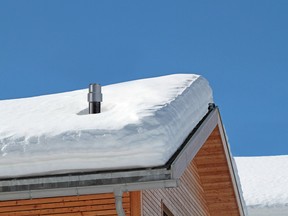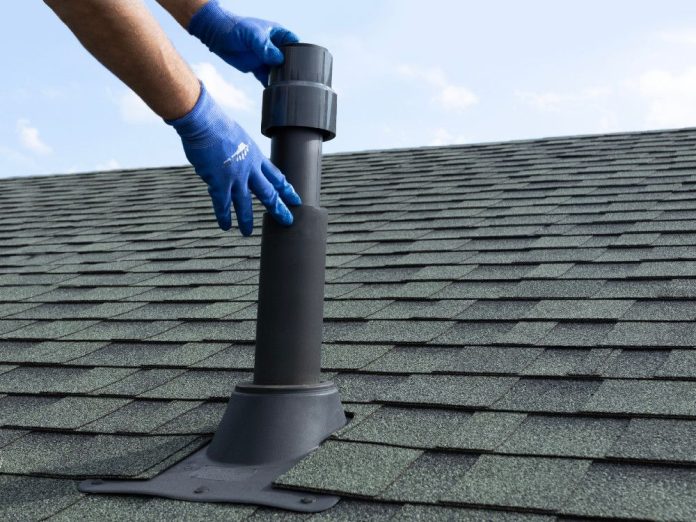Reviews and recommendations are unbiased and products are independently selected. Postmedia may earn an affiliate commission from purchases made through links on this page.
Article content
We Canadians deal with extreme winter challenges each year, and one of the most annoying (and mysterious) happens when rooftop plumbing vent pipes get plugged with frost. This is called “ice capping” and the longer the cold spells you get in your area, the more likely it is to occur. When plumbing vents get ice capped, toilets won’t flush right, water may drain from sinks more slowly, and sewer gas could enter your home through drain traps that no longer have enough water in them to keep the stinkiness out. All this is why a new, electricity-free solution to this problem caught my eye.
Article content
Before you can see why I’m impressed, you first need to understand more about what plumbing vents do. If you ever have drains that don’t work properly in cold weather, you’ll definitely want to keep reading.
Article content
Why houses have plumbing vents
Whenever water flows down drain pipes after flushing a toilet, taking a shower, or emptying a sink, it creates a partial vacuum behind the water as sewage flows. If air is not admitted to the pipe further upstream through a dedicated vent, drain problems will almost certainly occur.
The vent pipe sticking up through your roof is the source of make-up air that gets drawn down to compensate for the loss of water volume travelling down drains. Here in the Great White North, accumulating frost from the warm, moist air inside drain systems can build up enough to plug the top of this pipe during extended periods of cold weather, creating a scenario exactly the same as if you didn’t have a drain vent at all.
Installing traditional systems for eliminating ice capping are troublesome to install because of the need to extend wiring to the vent area, not to mention an increased electricity bill. All this is where an innovative, Canadian-designed, electricity-free invention called ArcticVent-HT comes in.
Article content
 The ArcticVent-HT draws a small amount of heat from inside a house and into plumbing vent stacks, keeping them frost-free and working. Photo by Photo Heat-Line
The ArcticVent-HT draws a small amount of heat from inside a house and into plumbing vent stacks, keeping them frost-free and working. Photo by Photo Heat-Line
What is It?
The product is made by a Canadian company I admire called Heat-Line, and it’s a 24” or 42”-long black pipe with an enlarged top end. Seems simple, but there’s elegant genius here.
The body of the unit is sized just right to slide down into any standard 3” diameter vertical rooftop drain vent, and it looks like nothing special. The enlarged ring on top keeps it from slipping all the way down the vent and disappearing.
What’s not obvious is the fact that the pipe-like body is actually made with two layers – an inner wall and an outer wall. Between these walls is a convection-promoting gas that’s engineered for enhanced heat transfer. The convective movement of this gas transfers a tiny amount of heat from inside the warm part of the vent below the roofline, upwards to the cold part of the pipe above the roofline. Frost-blocked vent pipes are eliminated, and you never have to climb onto the roof in winter to clear blockages manually, and never use a milliwatt of electricity to keeps drains flowing.
Installing the unit
Aside from the time you or a helper might spend setting up a ladder to climb on the roof, actual installation time literally takes less than 15 seconds. Simply lower the unit into the vent pipe (it’s made to fit inside standard 3-inch diameter ABS or PVC), then climb down and put the ladder away. That’s it. No need to fasten, glue, wire or secure anything. Maintenance-free, electricity-free convection takes care of the rest. The 42”-long model works in most situations, while the 24” model works if there’s not enough vertical drain vent to accept the longer length.
With no additional energy costs, no need for maintenance, and literally a drag-and-drop installation, your toilets, sinks, showers and baths should continue working as well in February as they do in July.
Steve Maxwell lives on Manitoulin Island, Ontario, the largest freshwater island in the world. Join his new online handyman community at www.HandyPro.Tips to learn about home improvement from Steve a bunch of really nice, capable people.
Share this article in your social network
ottawacitizen.com
https://ottawacitizen.com/life/houseworks-electricity-free-plumbing-innovation-keeps-drain-vents-frost-free















